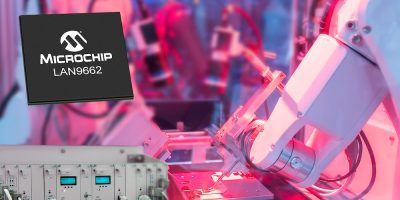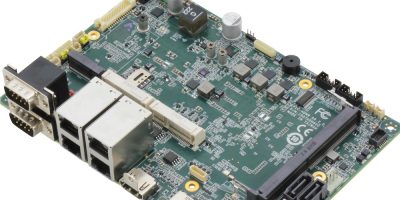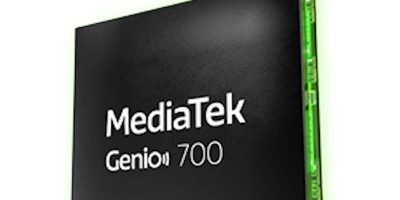With the ability to process high speed cyclical data in flight, the LAN9662 is Microchip’s latest Gbit Ethernet switch for industrial automation.
For automation networking, it has four ports, audio-video bridging and time sensitive networking (AVB/TSN), two integrated 10/100/1000BASE-T PHYs and a 600MHz Arm Cortex-A7 CPU subsystem.
A real time engine support industrial Ethernet applications, and provides the ability to modify the Ethernet frame in flight. This enables faster cyclical data rates and low latency, confirmed Microchip. The LAN9662 is compliant with key industry standards such as the OPC Unified Architecture (OPC/UA) and PROFINET software stack, offering deterministic communication capabilities necessary for industrial networking applications.
“Expanding on the LAN966x family, the LAN9662 opens a path to scale with TSN-enabled networking endpoints,” explained Charles Forni, vice president of Microchip’s USB and networking business unit. Developers can start designs knowing that industry standards are met and supported by a comprehensive software portfolio.
With two integrated PHYs, the LAN9662 provides low latency to support various daisy chain topologies. The PHY interfaces enable fast data processing within a specified time to provide a reliable network for automation applications such as motor, conveyor and multi-axis robot controllers.
The LAN9662 supports multiple interfaces, namely up to two RGMII/RMII, up to two 1000BASE-X/SerDes/2.5GBASE-X/KX, and a Quad-SGMII/Quad-USGMII interface. The configurable interfaces allow designers to reach various types of physical layers or interconnects as required.
The LAN9662 is supported by Microchip’s Switch API, the EVB-LAN9662 and the EVB-LAN9662 carrier board. Software support is also offered through Platform BSP, Linux Switchdev and PROFINET Software Stack.
Microchip Technology offers a wide product portfolio of smart, connected and secure embedded control solutions with development tools for customers operating in the industrial, automotive, consumer, aerospace and defence, communications and computing markets. It is headquartered in Chandler, Arizona, USA.






